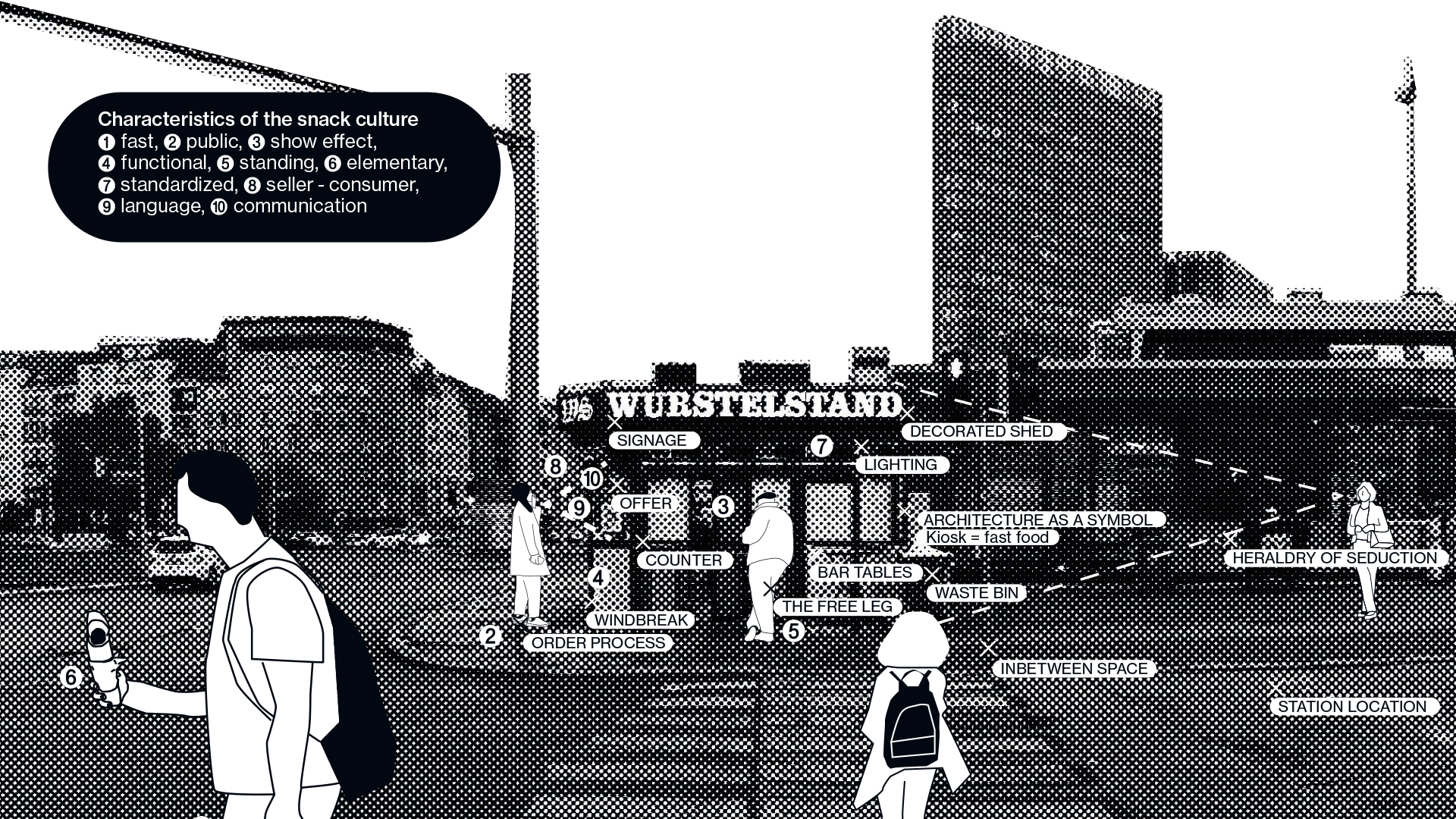11/2022
Mapping the Wiener Würstelstand – an expedition into underestimated, urban in-between spaces
Which historical, political, ideological, social, technical and cultural developments of the Wiener Würstelstand can be traced?
Aline Eriksson
Diploma in Architecture
E264-1 Zeichnen und Visuelle Sprachen
Supervisor: Inge Manka
The appearance of cities is shaped by their street furniture. Kiosks, benches, bus stops, etc. are in daily use by city dwellers and are intended to offer a place for rest in the public space. The Viennese sausage stand is one of these simply organised everyday architectures that has built up a culinary subculture in both urban and peripheral contexts since the beginning of industrialisation. The Würstelstand emerged from a necessity for affordable food and retains this characteristic to this day. In addition to their role as “places of quick satisfaction”, isolated sausage stands also take on the role of “filling stations” for social interactions. Influences from political decisions, technical developments, social aspects, cultural conditions and everyday coincidences are decisive for the appearance of these kiosks. These micro-architectures often appear inconspicuous at first glance but prove to be multi-layered places upon closer inspection.
The aim of this paper is to present an assessment of the current situation of Vienna’s sausage stands in the context of socio-political, cultural and architectural developments over the centuries. Furthermore, it will examine whether the image of sausage stands as “typically Viennese” catering for all social groups corresponds to reality.
Architectural ethnography is used as a method. Better understanding of processes and sensitivity towards places could be built up through a longer engagement with places and an increased diversity of experience. The tool of drawing helps to better describe the patterns of human habits and reveal the different realities that influence life around architecture.
The appearance of cities is shaped by their street furniture. Kiosks, benches, bus stops, etc. are in daily use by city dwellers and are intended to offer a place for rest in the public space. The Viennese sausage stand is one of these simply organised everyday architectures that has built up a culinary subculture in both urban and peripheral contexts since the beginning of industrialisation. The Würstelstand emerged from a necessity for affordable food and retains this characteristic to this day. In addition to their role as “places of quick satisfaction”, isolated sausage stands also take on the role of “filling stations” for social interactions. Influences from political decisions, technical developments, social aspects, cultural conditions and everyday coincidences are decisive for the appearance of these kiosks. These micro-architectures often appear inconspicuous at first glance but prove to be multi-layered places upon closer inspection.
The aim of this paper is to present an assessment of the current situation of Vienna’s sausage stands in the context of socio-political, cultural and architectural developments over the centuries. Furthermore, it will examine whether the image of sausage stands as “typically Viennese” catering for all social groups corresponds to reality.
Architectural ethnography is used as a method. Better understanding of processes and sensitivity towards places could be built up through a longer engagement with places and an increased diversity of experience. The tool of drawing helps to better describe the patterns of human habits and reveal the different realities that influence life around architecture.
Diploma in Architecture
E264-1 Zeichnen und Visuelle Sprachen
Supervisor: Inge Manka
